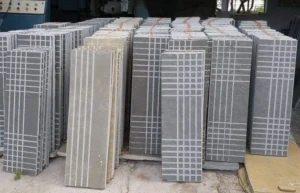Tandur Stone vs Shahabad Stone: Making the Optimal Choice for Your Next Project
When embarking on a construction or home renovation project, the choice of materials can dramatically affect the outcome. Among the variety of stones available in the Indian market, Tandur and Shahabad stones are often the top contenders. Each comes with unique properties and benefits, making it essential to thoroughly understand their attributes before making a choice. In this article, we’ll compare these two types of stone, helping you to determine which might be the best fit for your next project.
Which is better tandur stone or shahabad stone?
Tandur Stone
Tandur stone, also known as Tandur Blue or Tandur Grey stone, is quarried from the southern region of India, specifically in the Tandur, Telangana area. This natural stone is popular for its color consistency, durability, and versatile usage. It can be used for both indoor and outdoor applications, such as flooring, wall cladding, and landscaping.
Tandur stone is known for its high resistance to heat, making it an ideal choice for regions with a hot climate. It’s also extremely durable, resisting wear and tear for years, even in high-traffic areas. Plus, its smooth finish and unique coloration, which ranges from light to dark grey, offer a distinctive aesthetic appeal that can fit various architectural and design styles.
However, the uniformity in color may limit your design options, and the stone might need regular maintenance to maintain its look. Moreover, Tandur stone can be a bit expensive compared to other stones.
Shahabad Stone
Shahabad stone, derived from the Shahabad region in Karnataka, is another popular choice. It’s known for its robustness, natural appeal, and a broader color palette, including shades of yellow, pink, grey, and brown. Shahabad stone is often used for exterior paving, landscaping, and occasionally, interior flooring.
One of the standout features of Shahabad stone is its natural, slightly uneven surface, which provides a rustic and authentic look, often preferred for outdoor installations. It is extremely hard, making it resistant to scratching, and it also boasts high slip resistance, making it a safer choice for outdoor applications.
However, Shahabad stone is more porous compared to Tandur stone, meaning it might require sealing to prevent water absorption and staining. It’s worth noting that the cost of Shahabad stone is usually less than Tandur stone, making it a more budget-friendly option.
Conclusion
So, is Tandur stone better, or does Shahabad stone take the lead? The answer depends on the specifics of your project. If you’re looking for a stone with high heat resistance, color consistency, and durability for indoor usage, Tandur stone might be the better option. However, if you prefer a more rustic, authentic look with a wider range of color options, especially for outdoor use, Shahabad stone could be your best bet.
In terms of cost, Shahabad stone generally comes at a lower price point, but it might require more maintenance due to its porous nature. Tandur stone, on the other hand, has a higher upfront cost, but it might save you on long-term maintenance.
Remember, it’s crucial to consider your specific requirements, including budget, design preferences, and project location, before choosing between Tandur and Shahabad stones. It’s always recommended to consult with a stone specialist or an architect to ensure you make the best choice for your project.

